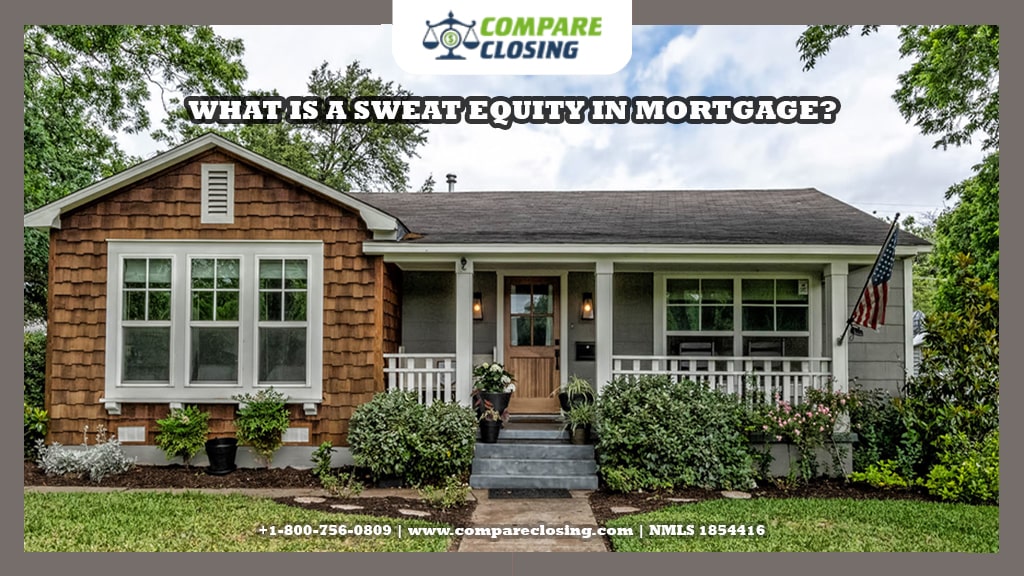Table of Contents
- What Are Netting Escrows & How Does It Work?: The Best Guide - January 2, 2024
- The Secret About Prescriptive Easement: Top Guide 1 Must Know - December 4, 2023
- About Home Equity Loans In Texas And How Can One Obtain It - November 27, 2023
Introduction
In a typical home purchase transaction, the buyer needs to put a certain amount as a down payment and the rest to be financed through a mortgage.
Borrowers can make a down payment of low as three percent of the sales price in some mortgage loan programs.
Being said that, there is one more option where you do not have to make any down payment and still buy the property using something known as “Sweat Equity.” In this post, we will understand what is sweat equity in detail.
What is Sweat Equity?
Sweat equity can increase the value of your home or underpin your contribution to a new real estate investment.
Also known
as “hard work,” this is the value you add to the sale price of your home
through do-it-yourself efforts or the expertise you invest in to increase the
return on your partner’s real estate investment.
Whether you want to increase the market
value of your home, make it more enjoyable, or get a higher return on your real
estate investment, this type of equity can help you achieve that goal without
having to invest any real money.
The sweat equity definition of an asset is the work you do for an improvement or extension that increases the value of a home or investment property you are planning to put on the market.
So instead of paying someone for a repair or upgrade, do the work yourself.
If you’re buying an investment property intending to fix it up and rent it out or possibly flip it, the do-it-yourself process you’re executing will make you sweat.
When you sell real estate, the
difference between the sale price and the amount you would have received
without the improvements in the asset’s market value is called sweat equity.
Who Qualifies For Sweat Equity Mortgages?
Regardless of the context in which it is used, an important aspect of sweat equity is that it involves unpaid work. And in this case, it means you. You are right. You do the work yourself, not a contractor or other professional worker.
However, that doesn’t mean you can cut back or work part-time. Lenders offering mortgages usually require certain construction skills before agreeing to this type of contract.
In many cases, this type of mortgage program must complete home improvement projects by the deadline to qualify for a down payment.
Whether it’s 30 days or 60 days to closing, it’s a very tight window for renovations, especially for you or the only one renovating the home.
Lenders should also verify the quality and value of renovation from a professional third party, also known as the appraiser.
For example, Freddie Mac’s Home Possible® program requires that all repairs qualified be certified by an independent appraiser to be qualified under this type of mortgage.
What Are The Sweat Equity mortgage Parameters For Freddie Mac’s Home Possible Program?
Initially, when this program was launched, the potential borrowers needed to put five percent as a down payment even after the renovations.
According to the new update, the borrower just needs to follow the below parameters to buy the property without any down payments.
- This type of equity should be used for a full down payment and closing costs up to 97% LTV / 105% total LTV.
- The maximum LTC capped for manufactured homes is 95% of the sales price.
Sweat Equity as an eligible source of financing
- All repairs and improvements made by the borrower are specified in the sales contract and displayed in the appraisal report.
- Repairs or improvements are indicated in the public appraisal report during the appraisal.
- Credit for work performed before the appraiser’s initial examination of the property is not eligible for this type of equity program.
This Type Of Equity Is Calculated As Follows
- The cost of the work carried out must be estimated by a certified appraiser or appraisal management company and documented separately in the valuation report or mortgage document.
- The cost of the delivered material must be estimated by a certified appraiser or appraisal management company, or calculated from the material purchase receipt and documented accordingly.
All work performed must be competently executed and certified by the appraiser to support the appraised value.
Conclusion
When you are planning to buy a new home in a hot real estate market, instead of buying overpriced move-in-ready homes, buying a fixer-upper and using sweat equity to purchase the property can help you save a good amount of money.
As a buyer on a tight budget with construction skills, you would need to find a fixer-upper that you think is habitable after the repairs and find a lender who can provide this type of mortgage loan program.
You would be surprised by the amount of money that you can save.
Amanda Byford
Amanda Byford has bought and sold many houses in the past fifteen years and is actively managing an income property portfolio consisting of multi-family properties. During the buying and selling of these properties, she has gone through several different mortgage loan transactions. This experience and knowledge have helped her develop an avenue to guide consumers to their best available option by comparing lenders through the Compare Closing business.





